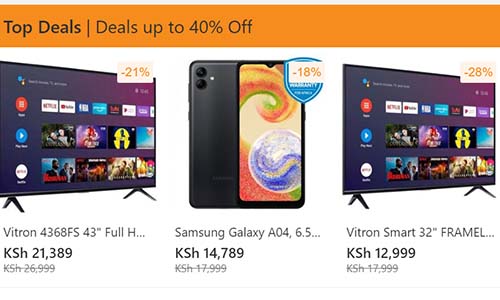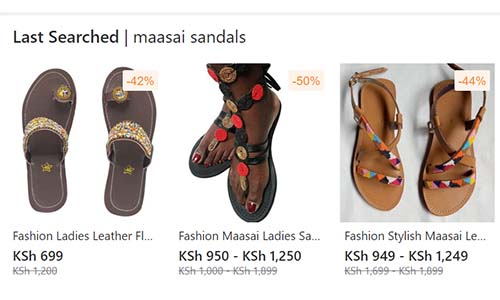Selling products on Jumia, one of Africa’s leading online marketplaces, offers great potential for businesses to reach a wide customer base and boost sales. However, it can be disheartening when your products struggle to gain traction and fail to attract buyers on Jumia. If you find yourself in this situation, it’s essential to understand the underlying challenges and find effective solutions to turn things around.
In this blog post, we will delve into the common reasons why your products may not be selling well on Jumia and provide practical solutions to overcome these challenges. Whether it’s inadequate product descriptions, poor visibility, pricing issues, lack of customer reviews, limited marketing efforts, or inefficient inventory management, we’ll explore each obstacle and offer actionable strategies to help you optimize your listings, enhance visibility, and ultimately increase sales on Jumia.
The online marketplace landscape is highly competitive, and standing out among numerous sellers requires a strategic approach and continuous efforts. By addressing the specific challenges faced by your products and implementing the solutions we’ll discuss, you can improve your performance on Jumia, attract the right audience, and generate the desired results
So, if you’re wondering why your products aren’t being bought on Jumia, let’s dive into the various challenges and explore effective solutions that will help you overcome these obstacles. Together, we’ll work towards maximizing your success on Jumia and tapping into the immense opportunities it offers for your business.
Inadequate Product Descriptions

When it comes to online shopping, customers heavily rely on product descriptions to make informed purchasing decisions. If your product descriptions on Jumia are inadequate, vague, or lack essential details, it can significantly impact your sales. Customers want to know precisely what they are buying and what features or benefits your product offers.
To address the challenge of inadequate product descriptions, it’s crucial to enhance and optimize your product descriptions on Jumia. Here are some practical solutions to consider:
Accuracy and Detail
Ensure that your product descriptions are accurate, detailed, and provide relevant information. Include key specifications, dimensions, materials, color options, and any unique selling points. Be clear and concise, yet informative, allowing customers to visualize and understand your product fully.
Highlight Key Features
Identify the standout features of your product and highlight them in your description. Explain how these features benefit the customer and set your product apart from competitors. Use bullet points or subheadings to make important information easily scannable.
High-Quality Images
Supplement your product descriptions with high-quality images. Include multiple images that showcase your product from different angles. Clear and visually appealing images provide customers with a better understanding of your product’s appearance and build trust in its quality.
Customer-Focused Language
Use language that resonates with your target audience. Write your product descriptions in a tone and style that speaks directly to your customers, addressing their needs and desires. Use persuasive language to highlight the value and benefits your product brings.
SEO Optimization
Incorporate relevant keywords in your product descriptions to improve visibility and search rankings on Jumia. Conduct keyword research to understand the terms customers are using to find products similar to yours. Strategically integrate these keywords in your descriptions while ensuring a natural flow of language.
Formatting and Readability
Structure your product descriptions for easy readability. Break down the information into paragraphs, bullet points, or subheadings to make it more scannable. Use bold or italic formatting to emphasize important details. Avoid large blocks of text that can be overwhelming to customers.
By implementing these solutions, you can enhance your product descriptions on Jumia, making them more engaging, informative, and appealing to customers. Remember, a well-crafted product description can significantly influence a customer’s decision to purchase your product. So invest time and effort into optimizing your descriptions to drive sales and capture the attention of potential buyers on Jumia
Poor Product Visibility

One of the key challenges that may prevent your products from selling on Jumia is poor visibility. If your products are not easily discoverable by potential customers, they won’t generate the desired interest or sales. To address this challenge, it’s important to optimize your product listings on Jumia for improved visibility. Here are some effective solutions to enhance product visibility:
Keyword Optimization
Conduct thorough keyword research to identify relevant search terms that potential customers are using to find products similar to yours. Incorporate these keywords strategically in your product titles, descriptions, and tags. By aligning your listings with popular search terms, you increase the chances of appearing in search results and reaching a broader audience.
Clear and descriptive titles
Craft concise, yet descriptive, product titles that accurately reflect your offerings. Include important product details such as brand, model, size, color, and any unique features. Make sure your titles are easy to read and understand, capturing the essence of your product at a glance.
Complete and Detailed Descriptions: Provide comprehensive and detailed product descriptions that highlight key features, benefits, and specifications. Clearly communicate the value proposition of your product and address any potential customer concerns or questions. A well-crafted description helps customers make informed decisions and encourages them to proceed with a purchase.
High-Quality Images
Visuals play a vital role in attracting customers’ attention and increasing product visibility. Include high-quality images that showcase your products from multiple angles. Use clear and well-lit photographs that accurately represent the appearance and attributes of your product. Images that stand out and provide a realistic view can significantly improve product visibility.
Customer Reviews and Ratings
Positive customer reviews and ratings can significantly boost product visibility and instill trust in potential buyers. Encourage satisfied customers to leave reviews and ratings for your products on Jumia. Offer exceptional customer service to generate positive feedback, and promptly address any negative reviews to showcase your commitment to customer satisfaction
Promotional Strategies
Consider running promotions or special offers to increase the visibility of your products. Jumia often features discounted products or campaigns, so take advantage of these opportunities to showcase your offerings. Highlight the promotional pricing or special deals in your listings to catch the attention of potential buyers.
Cross promotion and collaboration
Collaborate with other sellers or influencers on Jumia to cross-promote each other’s products. This can help expand your reach and tap into new customer segments. Collaborative efforts such as joint marketing campaigns, product bundles, or guest blog posts can increase visibility and attract more customers.
By implementing these solutions, you can enhance the visibility of your products on Jumia and increase their chances of being discovered by potential buyers. Remember, in a highly competitive marketplace, improving visibility is crucial to standing out and driving sales. So invest time and effort into optimizing your product listings to maximize your visibility and reach a wider audience on Jumia.
Inadequate Pricing Strategy
One of the significant factors that can impact the success of your products on Jumia is an inadequate pricing strategy. If your products are priced too high compared to competitors or perceived value, potential customers may be deterred from making a purchase. On the other hand, if your prices are too low, customers may question the quality or reliability of your products. To address this challenge and optimize your pricing strategy on Jumia, consider the following solutions
Market Research: Conduct thorough market research to understand the pricing landscape for similar products on Jumia. Analyze the prices of your competitors and identify the average price range for products in your category. This will help you gain insights into industry standards and determine the appropriate pricing strategy for your products.
Competitive Pricing: Ensure that your prices are competitive within the market. While you may want to maximize your profits, it’s essential to strike a balance between profitability and attracting customers. Consider pricing your products within a reasonable range that aligns with customer expectations and offers good value for the price.
Value Proposition: Communicate the unique value proposition of your products to justify the pricing. Highlight the features, benefits, and quality that set your products apart from the competition. Clearly articulate how your products address customer needs or solve specific problems. By emphasizing the value customers will receive, they may be more willing to pay a higher price.
Special Promotions and Discounts: Consider offering special promotions, discounts, or bundled deals to incentivize customers to choose your products. Limited-time offers or exclusive discounts can create a sense of urgency and encourage customers to make a purchase. Highlight these promotions in your product listings on Jumia to attract attention and generate interest.
Monitor Pricing Trends: Keep a close eye on pricing trends within your industry. Regularly assess the market and adjust your prices accordingly. If you notice that competitors are lowering their prices or introducing new offers, evaluate whether it’s necessary to make price adjustments to remain competitive.
Customer Perception: Consider the perceived value of your products from the customer’s perspective. Price your products in a way that aligns with the perceived quality, features, and benefits they offer. Remember that customers are willing to pay more if they believe they are getting a premium product or a better overall experience.
Profit Margins and Costs: While it’s important to be competitive, ensure that your pricing strategy allows for sustainable profit margins. Consider your production costs, operational expenses, and desired profit margin when setting prices. It’s crucial to strike a balance between generating revenue and covering your costs to maintain a profitable business.
By implementing these solutions, you can optimize your pricing strategy on Jumia and increase the chances of attracting customers. Remember, pricing is a critical factor in customer decision-making, and finding the right balance between competitiveness and profitability is key. Continuously evaluate your pricing strategy, stay informed about market trends, and adapt accordingly to ensure your products are priced competitively on Jumia.
Insufficient Customer Reviews
Customer reviews and ratings play a crucial role in influencing purchasing decisions on Jumia. When potential buyers come across products with limited or no customer reviews, they may hesitate to make a purchase due to the lack of social proof. Therefore, addressing the challenge of insufficient customer reviews is essential to build trust and encourage potential customers to buy your products. Here are some effective solutions to increase customer reviews on Jumia:
Encourage Reviews: Proactively encourage your customers to leave reviews after purchasing your products. Consider sending follow-up emails or messages requesting feedback and providing a convenient link for customers to leave a review on Jumia. Express your appreciation for their support and emphasize the importance of their opinion in helping others make informed decisions.
Offer Incentives: Provide incentives to customers for leaving reviews. You can offer discounts, loyalty points, or other rewards as a token of appreciation for their time and effort. Make sure to comply with Jumia’s policies regarding incentivized reviews and avoid any practices that may be seen as manipulative or unethical.
Streamline the Review Process: Make it as easy as possible for customers to leave reviews. Provide clear instructions and guidance on how to leave a review on Jumia. Streamline the process by providing a direct link to your product’s review section or including step-by-step instructions in your post-purchase communication.
Engage with Customers: Respond promptly to customer inquiries, feedback, and reviews. Engaging with customers shows that you value their opinions and are committed to providing excellent customer service. Address any concerns or issues raised in the reviews, and showcase your dedication to resolving problems and ensuring customer satisfaction.
Follow Jumia’s Review Guidelines: Familiarize yourself with Jumia’s guidelines and policies regarding customer reviews. Ensure that you comply with the platform’s rules to maintain trust and credibility. Avoid any practices that may violate Jumia’s policies, such as manipulating reviews or posting fake reviews.
Provide an Exceptional Customer Experience: Offer outstanding products and customer service to increase the likelihood of positive reviews. Deliver on your promises, exceed customer expectations, and provide a seamless shopping experience. Happy customers are more likely to leave positive reviews and recommend your products to others.
Share Positive Reviews: Showcase positive customer reviews on your Jumia product listings, website, or social media platforms. Displaying testimonials and success stories can boost confidence in your products and encourage more customers to leave reviews. Highlight the value and satisfaction that previous customers have experienced with your products.
Remember, customer reviews are a powerful form of social proof that can influence potential buyers. By actively seeking and promoting customer reviews on Jumia, you can build credibility, trust, and ultimately increase sales. Encourage engagement, provide exceptional customer experiences, and consistently deliver high-quality products to cultivate a positive review culture that benefits your business on Jumia.
Limited Marketing Efforts
One of the common reasons for products not being bought on Jumia is limited marketing efforts. Without effective marketing strategies, your products may not reach their target audience, resulting in low visibility and sales. To overcome this challenge and boost your marketing efforts on Jumia, consider the following solutions:
Social Media Promotion: Leverage social media platforms to promote your products on Jumia. Create engaging content related to your products and share it on platforms like Facebook, Instagram, and Twitter. Utilize targeted advertising options to reach specific demographics or interests that align with your target audience.
Influencer Collaborations: Collaborate with influencers or bloggers who have a significant following and influence within your target market. Engage them to promote your products through sponsored posts, reviews, or giveaways. Influencers can help increase brand awareness and drive traffic to your Jumia listings.
Email Marketing: Build an email list of interested customers and prospects who have shown an interest in your products. Regularly send them newsletters, product updates, and exclusive offers to keep them engaged. Include direct links to your Jumia product listings to encourage conversions.
Paid Advertising: Consider utilizing paid advertising options on Jumia, such as sponsored product listings or display ads. These targeted advertisements can increase the visibility of your products and drive traffic to your listings. Monitor the performance of your ads and make necessary adjustments to optimize their effectiveness.
Search Engine Optimization (SEO): Optimize your product listings on Jumia for search engines. Conduct keyword research to identify relevant keywords and incorporate them into your titles, descriptions, and tags. This will improve your visibility in search engine results and increase the chances of potential customers finding your products.
Content Marketing: Create high-quality and informative content related to your products. Publish blog posts, guides, or tutorials that provide value to your target audience. Incorporate links to your Jumia product listings within the content to drive traffic and potential sales.
Participate in Jumia Campaigns: Keep an eye out for promotional campaigns or events run by Jumia. Participate in these campaigns by offering discounts, limited-time offers, or exclusive deals. Promote your participation through various marketing channels to create buzz and attract customers to your products.
Customer Referral Program: Implement a customer referral program where existing customers are rewarded for referring new customers to your products on Jumia. Word-of-mouth marketing can be a powerful tool in generating awareness and increasing sales.
Collaborate with Jumia: Explore opportunities for collaboration with Jumia itself. Jumia often organizes events or features specific product categories. Participate in these initiatives to gain exposure and tap into their existing customer base.
Monitor and Analyze: Regularly monitor the performance of your marketing efforts on Jumia. Analyze metrics such as click-through rates, conversion rates, and sales to understand what strategies are working effectively. Adjust your marketing tactics based on the insights gained to optimize your results.
By implementing these marketing strategies on Jumia, you can increase the visibility and reach of your products, leading to improved sales. Remember, marketing is essential to attract potential customers, create brand awareness, and differentiate yourself from competitors. Invest time, effort, and resources into developing and executing effective marketing campaigns to maximize the potential of your products on Jumia
Inadequate Inventory Management
Inadequate inventory management can greatly impact your success on Jumia. If you struggle to maintain accurate stock levels or fail to fulfill orders promptly, it can lead to negative customer experiences and ultimately result in lost sales. To address this challenge and improve your inventory management on Jumia, consider the following solutions:
Implement Inventory Tracking Systems: Utilize inventory tracking systems or software to accurately monitor and manage your stock levels. These systems can provide real-time updates on inventory levels, allowing you to make informed decisions and avoid overselling or running out of stock.
Centralize Inventory Management: Centralize your inventory management to ensure consistency across different sales channels. This can help prevent errors and discrepancies in stock levels. By integrating your Jumia store with your inventory management system, you can automatically update stock quantities and avoid overselling.
Set Reorder Points: Establish reorder points for each product based on historical sales data and lead times. Reorder points indicate the minimum stock level at which you should place a new order to replenish inventory. This approach ensures that you have sufficient stock to meet customer demand without excessive inventory holding costs.
Forecast Demand: Analyze past sales data and identify trends to forecast future demand for your products. Consider seasonal variations, marketing campaigns, and other factors that may impact demand. Accurate demand forecasting helps you plan your inventory levels and prevent stockouts or overstocking.
Fulfill Orders Promptly: Ensure that you promptly fulfill orders placed on Jumia. Delayed shipments or unfulfilled orders can lead to negative customer reviews and damage your reputation. Implement efficient order processing systems and streamline your fulfillment process to minimize delays.
Implement Just-in-Time (JIT) Inventory: Just-in-Time inventory management aims to have stock arrive just as it is needed for production or order fulfillment. By adopting this approach, you can reduce inventory holding costs and minimize the risk of excess inventory. However, it requires close coordination with suppliers and accurate demand forecasting.
Establish Safety Stock Levels: Maintain safety stock levels to account for unexpected spikes in demand or supplier delays. Safety stock acts as a buffer and ensures that you have enough inventory to fulfill orders even during unforeseen circumstances. Determine appropriate safety stock levels based on historical data and lead times.
Regularly Audit Inventory: Conduct regular audits to verify the accuracy of your inventory records. Compare physical stock counts with recorded quantities to identify any discrepancies and take corrective actions. This helps maintain accurate inventory levels and reduces the chances of overselling or stockouts.
Optimize Warehouse Layout: Organize your warehouse in a way that maximizes efficiency and minimizes errors. Implement proper labeling, bin locations, and tracking systems to easily locate and retrieve products. This streamlines the order fulfillment process and minimizes the chances of picking and shipping errors.
Monitor Supplier Performance: Keep a close eye on the performance of your suppliers. Timely and reliable deliveries are essential for maintaining adequate inventory levels. Regularly assess your suppliers’ performance and address any issues promptly to avoid disruptions in your supply chain.
By implementing these solutions, you can improve your inventory management on Jumia and ensure that you can meet customer demand efficiently. Effective inventory management minimizes stockouts, reduces the risk of overselling, and enhances customer satisfaction. Invest in robust systems, accurate forecasting, and efficient processes to maintain optimal inventory levels on Jumia.
Conclusion
Selling products on Jumia can be a lucrative opportunity for businesses, but it requires overcoming various challenges to achieve success. In this article, we have explored some common reasons why products may not be bought on Jumia and provided solutions to address each challenge.
From inadequate product descriptions to limited marketing efforts, poor product visibility to insufficient customer reviews, and inadequate pricing strategies to inadequate inventory management, each aspect plays a crucial role in driving sales on Jumia. By understanding these challenges and implementing the suggested solutions, you can enhance your chances of selling products successfully on the platform.
It is essential to invest time and effort in creating comprehensive and compelling product descriptions that highlight the features, benefits, and unique selling points of your products. Additionally, optimizing your product visibility through effective marketing strategies, such as social media promotion, influencer collaborations, and email marketing, can significantly increase your reach and attract potential customers.
Read other articles: How to file KRA returns without a p9 form

